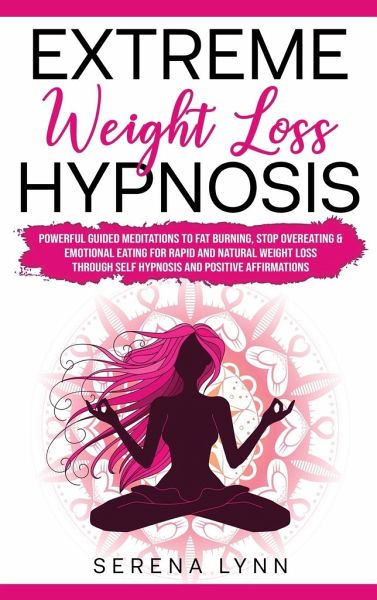
One New York Times writer suggested meditation as a good way to relieve stress. Although there are some who doubt meditation, the article makes clear that it is an effective tool for all. Meditation can help you in many ways, regardless of your level of experience. The author will explain how to get started with meditation. The author also offers tips on how to keep motivated while meditation. Meditation is meant to lower stress, increase concentration, and reduce anxiety.
First, it is important to choose a place to meditate. There are many different meditation locations, including a wood-lined room or a yoga mat. Some prefer to lie on their backs or sit in a chair. It does not matter what position or position you choose. Some experts recommend listening to music that helps people relax and focus. This makes it possible for those who cannot make it to class to watch them online.

Meditation can also be used for health reasons. However, it's important to find the right time and place for it. The meditation process can often cause you pain. You might feel a dull cramp in the back or a sharp pain in your leg. In these cases, you can accept the pain and focus your attention elsewhere. You can also adjust your posture to reduce pain. Meditation should not be time-consuming.
An experienced meditation teacher will help you learn the art. Meditation classes teach people how to meditate in a safe and comfortable environment. Decorate the space with candles, plants, or candles. It is important to find a quiet spot. Meditation should be done in a quiet place. If you feel stressed, you might consider listening to some calming music.
Meditation is meant to improve your well-being and health. Meditation can help improve your life, and it can also reduce stress. Meditation can be done in many ways. It's a way for some to relax and enjoy the process. You can read the article at nytimes.com for some great tips on meditation. You should incorporate visualization into your meditation sessions. Focusing on your thoughts and emotions will help you to notice their effects.

When starting a meditation course, it is important that you find a quiet place with minimal distractions. It is important to avoid distractions that can distract you from your meditation class. You may also find it helpful to set a time limit. To get the best out of your practice, aim for 10 minutes at once. When you meditate, it is important that you pay attention to your comfort level. It's possible to have difficulty concentrating if you feel uncomfortable.
FAQ
What is the difference between a calorie or a kilocalorie.
Calories refer to units that are used for measuring the energy in food. A calorie is a unit of measure. One calorie is equal to one degree Celsius in energy.
Kilocalories refer to calories in another term. Kilocalories equal one thousandth of a calorie. 1000 calories are equal to one kilocalorie.
Exercise: Is it good or bad for immunity?
Exercise is good for your immune systems. Your body creates white blood cells when you exercise that fight infection. Your body also gets rid of toxins. Exercise helps to prevent heart disease and cancer. Exercise can help reduce stress.
However, exercising too much can weaken your immune system. Your muscles can become sore if you exercise too much. This can lead to inflammation and swelling. Your body then has to produce more antibodies to fight off infection. This can lead to allergic reactions and other autoimmune disorders.
So, don't overdo it!
What's the problem with BMI?
BMI is the acronym for Body Mass Index. It measures body fat based upon height and weight. The following formula is used to calculate BMI:
Weight in kilograms divided by height in meters squared.
The score is expressed as a number between 0 and 25. A score greater than 18.5 is considered overweight. A score greater than 23 is considered obese.
A person who weighs 100 kilograms and is 1.75m tall will have an BMI of 22.
Statistics
- nutrients.[17]X Research sourceWhole grains to try include: 100% whole wheat pasta and bread, brown rice, whole grain oats, farro, millet, quinoa, and barley. (wikihow.com)
- WHO recommends consuming less than 5% of total energy intake for additional health benefits. (who.int)
- According to the 2020 Dietary Guidelines for Americans, a balanced diet high in fruits and vegetables, lean protein, low-fat dairy and whole grains is needed for optimal energy. (mayoclinichealthsystem.org)
- WHO recommends reducing saturated fats to less than 10% of total energy intake; reducing trans-fats to less than 1% of total energy intake; and replacing both saturated fats and trans-fats to unsaturated fats. (who.int)
External Links
How To
What does the word "vitamin" mean?
Vitamins are organic compounds that can be found in foods. Vitamins are necessary for us to absorb nutrients in the foods we consume. Vitamins cannot be produced by the body. They must be acquired from food.
There are two types if vitamins: water soluble, and fat soluble. Water-soluble vitamins dissolve readily in water. These include vitamin C (thiamine), Vitamin B1 (riboflavin), Vitamin B2 (riboflavin), Vitamin B3 (niacin), Vitamin B6 (pyridoxine), Vitamin C, B1 (thiamine), Vitamin B2 (riboflavin), Vitamin B3 (niacin), and Vitamin B6 (pyridoxine). Fat-soluble vitamins are stored in the liver, fatty tissue and kidneys. Vitamin D, E, K and A are some examples.
Vitamins are classified according their biological activity. There are eight major vitamin groups:
-
A - Vital for normal growth and maintaining good health.
-
C - essential for nerve function and energy generation.
-
D - essential for healthy bones, teeth, and gums.
-
E - Required for good vision & reproduction
-
K - Essential for healthy muscles and nerves.
-
P - Essential for strong bones and teeth.
-
Q - Aids digestion and iron absorption
-
R - necessary for making red blood cells.
The recommended daily intake (RDA), of vitamins varies with age, gender and physical condition. The U.S. Food and Drug Administration, (FDA), sets the RDA value.
For adults over 19, the RDA for vitaminA is 400 micrograms per daily. For fetal development, pregnant women need 600 mg per day. Children ages 1-8 require 900 micrograms per day. For infants younger than one year, 700 micrograms are required daily. However, this number drops to 500 micrograms each day for children aged 9-12 months.
Children ages 1-18years who are obese need 800 micrograms per day while those who are overweight need 1000 micrograms per day and children who are underweight need 1200 micrograms per day to meet their nutritional needs.
2200 mg of vitamin A per day is required for children aged 4-8 who have been diagnosed by anemia.
2000 micrograms is the minimum daily intake for adults over 50 years old to maintain good health. Due to their increased nutrient needs, pregnant and breastfeeding women need 3000 micrograms daily.
Adults over 70 years of age need 1500 micrograms per day since they lose about 10% of their muscle mass each decade.
Women who are pregnant or nursing need more than the RDA. Pregnant woman need 4000 micrograms daily in pregnancy, and 2500 per day after childbirth. Breastfeeding mothers need 5000 mg per day when breastmilk is being produced.